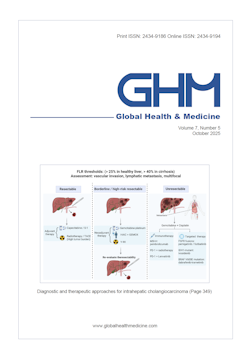Global Health & Medicine 2022;4(5):282-284.
Stroke treatment during the COVID-19 pandemic
Tamai Y, Arai N, Fujitani M, Kanayama S, Inoue M, Hara T
Studies have reported that COVID-19 is associated not only with pneumonia but also with cerebrovascular disease. Consequently, medical personnel involved in treating stroke in the emergency medicine setting have been placed in a situation that requires them to provide treatment while always remaining mindful of the possibility of COVID-19. Here, we describe the current state of stroke treatment during the COVID-19 pandemic. Four patients with stroke and concomitant COVID-19 were treated at our facility. We treated 3 patients with cerebral infarction and 1 patient with cerebral venous sinus thrombosis. All 3 patients with cerebral infarction had a poor outcome. This was attributed in part to the poor general condition of the patients due to concomitant COVID-19, as well as to the severity of the major artery occlusion and cerebral infarction. One patient with cerebral venous sinus thrombosis had a good outcome. Anticoagulant therapy was administered at our hospital and resulted in a stable clinical course. Our hospital has worked to establish an examination and treatment system that enables mechanical thrombectomy to be performed even during the COVID-19 pandemic. We devised a protocol showing the steps to be taken from initial treatment to admission to the cerebral angiography room. Our hospital was able to continue accepting requests for emergency admission thanks to the examination and treatment system we established. Up-to-date information should continue to be collected to create examination and treatment systems.
DOI: 10.35772/ghm.2022.01028







